When they entered the cave, they were blown away by what they saw.

Nestled in the New Mexico desert, a treasure trove of natural caves awaits, brimming with wildlife and ancient rock formations.
Amidst this natural splendor, an artist has embarked on a unique journey, creating his own set of man-made caves.
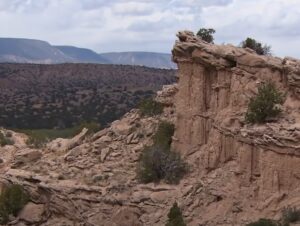
Meet Ra Paulette, a sculptor who has dedicated 25 years to meticulously carving out elaborate caves in the sandstone.
These caves are not just empty spaces; they are adorned with detailed pictures and designs, each carefully thought out and executed.
Paulette’s motivation is twofold: he aims to blend natural beauty with human artistry, and he’s captivated by the desert’s wild beauty, which he channels into his art.
“I see this as an environmental project,” he explains. “I’m trying to open up people’s feelings.”
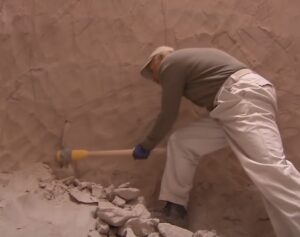
Paulette’s creations may seem natural, but they are anything but haphazard.
He invests considerable thought into manipulating space and negative space, guiding the viewer’s gaze to various focal points and balancing sensations of closeness and expansiveness.
“It has a lot to do with the juxtaposition of opposites,” Paulette notes.
“The sense of being underground with light streaming in. The intimacy of being in a cave, yet the columns end up very large, sometimes 30, 40 feet high.”
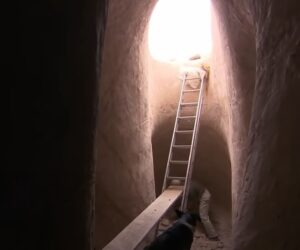
This passion project has certainly not gone unnoticed.
Many of his cave designs are commissioned by locals who are enamored with his work and desire their own beautiful cave space.
Some of Paulette’s designs even include furniture, wooden floors, and electricity.
One commission boasts a colorfully-tiled bathroom with running water, showcasing how Paulette’s touch has transformed the simplicity of the caves into something more elaborate.

Remarkably, Paulette has no formal training in design, architecture, or sculpture.
His breathtaking skills are self-taught, fueled by his passion.
Despite spending years on these intricate designs, he remains modest in his pricing.
For instance, one “apartment” took two years to complete, yet he charged only $12 an hour. “You don’t do this for the money,” Paulette says.
“You’re not getting rich off of making these beautiful places. No, it’s the process. You know, I’m having the time of my life.”
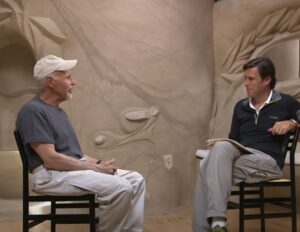
For Paulette, the real joy lies in the act of creation.
Once a project is finished, he hands it over to others and moves on to his next “source of wonder.”
However, Paulette’s work remained relatively unknown until a documentary filmmaker discovered him.
The resulting documentary, “Cavedigger,” took three years to film and earned an Academy Award nomination.
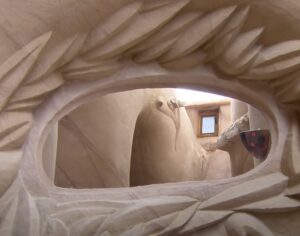
Following the release of the documentary, demand for Paulette’s work skyrocketed.
Two of his caves, along with the surrounding land, were even listed for sale at nearly a million dollars, marking a significant shift for the humble stone carver.
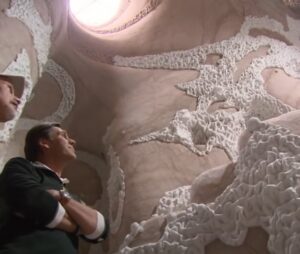
Despite this newfound fame and potential wealth, Paulette remained focused on his art.
His next project, for the first time, involved both painting and sculpting.
He referred to it as his magnum opus—a larger cave intended as a gathering place and retreat, where people could experience what Paulette most hoped to convey through his work: peace.





